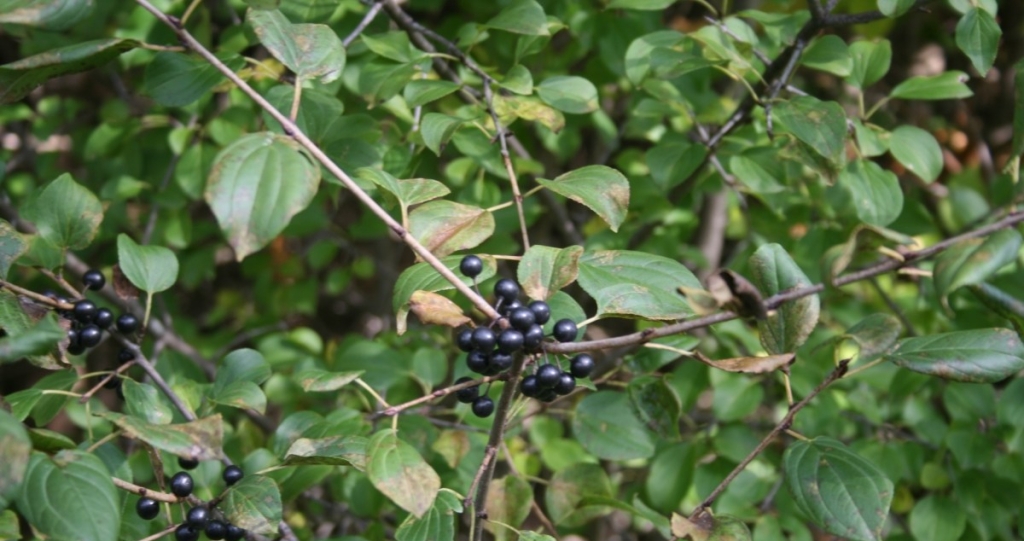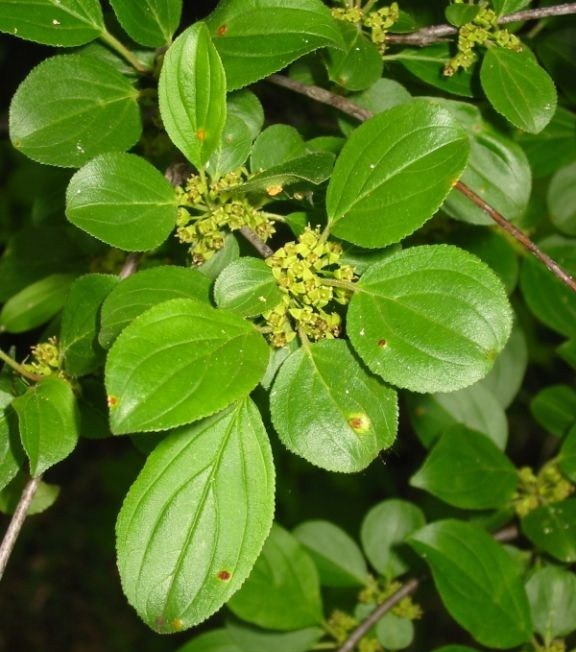
Intro:
I remember in my grade 11 biology class our teacher brought us to the little forest behind our school. She told us that we were going to carefully collect leaves from specific plants and identify them. From all the leaves we had to collect and identify, the one I remembered the most was the common buckthorn (Rhamnus cathartica) – with their oval/circle-like leaves, very shiny berries and tangled look. After that class I was able to identify that one species of plant and point it out with ease whenever I went on nature walks.
Later that year I volunteered during the summer break with the Credit Valley Conservations’ (CVC) youth program called Conservation Youth Corps (CYC) (I highly recommend volunteering with them if you’re in high school!), and on the first day they taught us some of the invasive species that could be found in the Credit Valley Watershed. To my surprise, I was able to identify one of the plants they showed us – the common buckthorn. It was shocking to see a plant that I saw so often be classified as an invasive species.
So, what exactly is an invasive species?
To start, an invasive species (or “non-indigenous/non-native” species) is classified as a plant, animal, or microorganism that is introduced by human action to an area outside of their natural past or present distribution. They are brought over from different parts of the world either intentionally (to provide decorations, food, etc.) or unintentionally (via ship ballast, along roads etc.). When introduced or spread in this new environment, they can threaten the ecosystems well-being as well as the human economy and well-being (i.e human health) [http://www.invadingspecies.com/ | https://www.canada.ca/en/environment-climate-change/services/biodiversity/invasive-alien-species-strategy.html].
How they affect the environment:
These species are the most common threat to the native plants and animals, especially those on The IUCN Red List since they [the invasive species] can lead to pretty dramatic changes in the structure and composition of ecosystems [https://www.iucn.org/theme/species/our-work/invasive-species]. They can outcompete native species for resources or habitat by having specific traits (such as fast growth/reproduction and phenotype plasticity), having the ability to grow and reproduce at a faster rate due to the lack of predation, and climate change [https://www.khanacademy.org/science/biology/ecology/community-structure-and-diversity/a/invasive-species | https://www.canada.ca/en/environment-climate-change/services/biodiversity/invasive-alien-species-strategy.html].
Now that’s a really quick and general overview of what invasive species are and what they do. It’s sort of crazy how these species can spread and become part of our everyday lives. We don’t notice them until they’re pointed out to us, and after that we can’t unsee them (I know I can’t).
There was one day during the CYC volunteering in which we were tasked to remove invasive species from a park in Port Credit, Mississauga. Our main targets were garlic mustard (Alliaria petiolata) and the common buckthorn. We had removed quite a lot of these plants from the area, but there was still a lot more forest that remained untouched because we had noticed poison ivy in the area (and a lot of it). Later on that day, our crew leader pointed out some of the ash trees in the area, explaining how you can tell when an invasive insect known as the emerald ash borer (Agrilus planipennis) had infected an ash tree and how they have spread very quickly throughout Southern Ontario. He also pointed out some Norway Maple trees (Acer platanoides) in the forest explaining how they too are an invasive species. Every since that day I became so aware of this growing problem; noticing how big it really was.
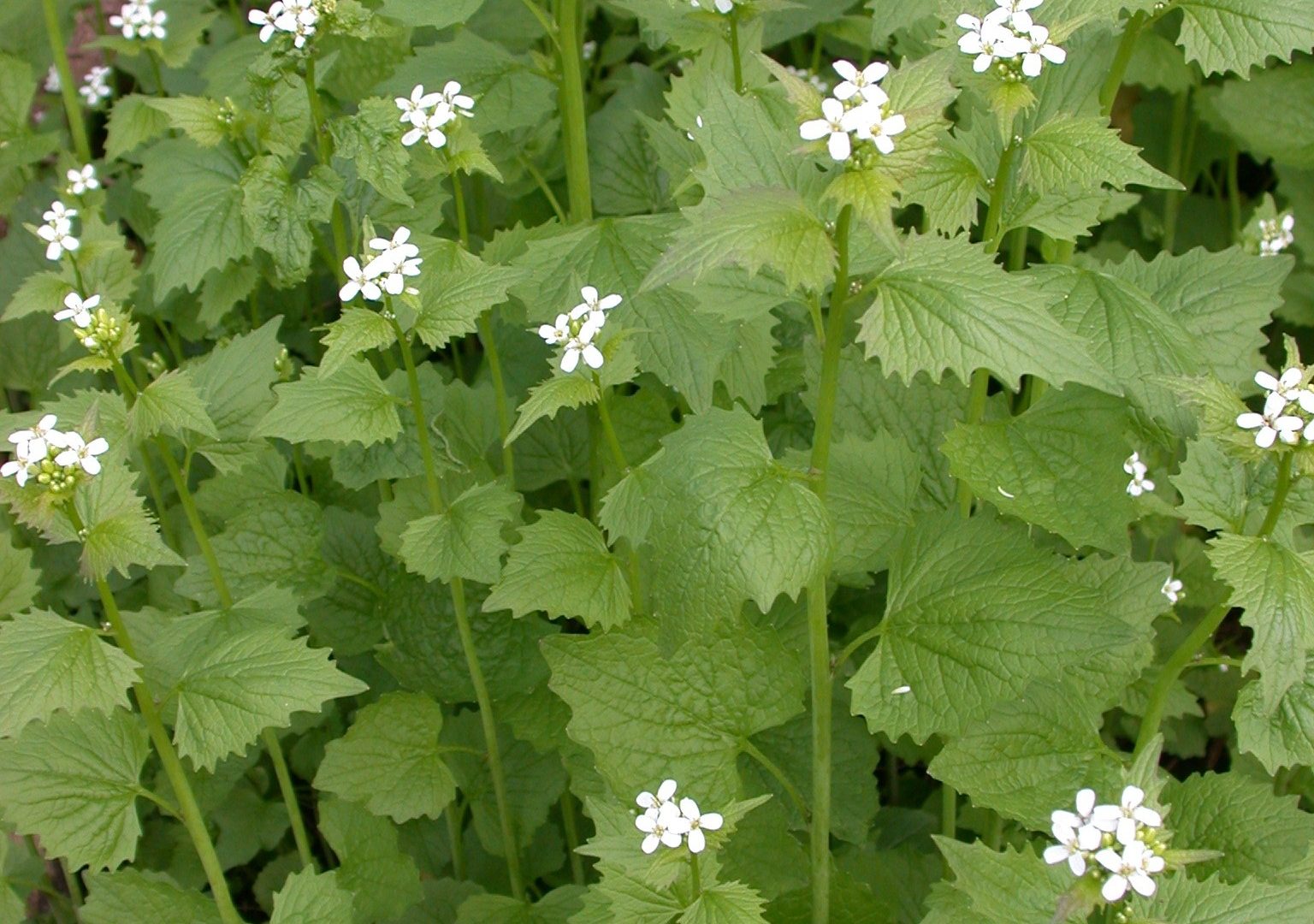
Garlic Mustard 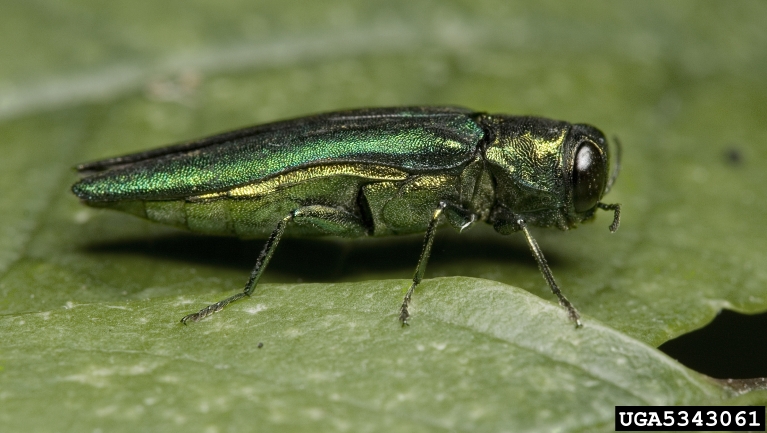
Emerald Ash Borer 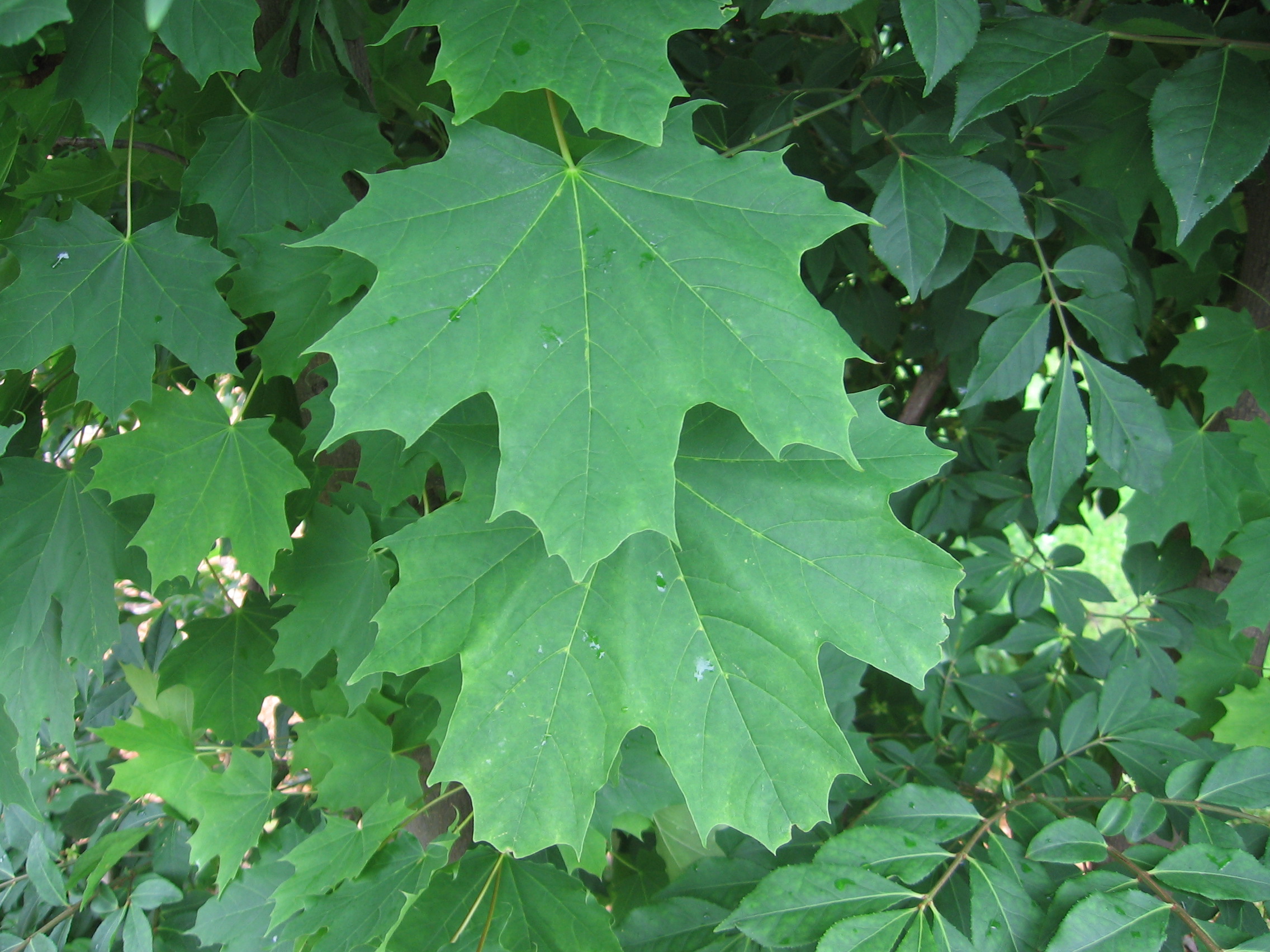
Norway Maple 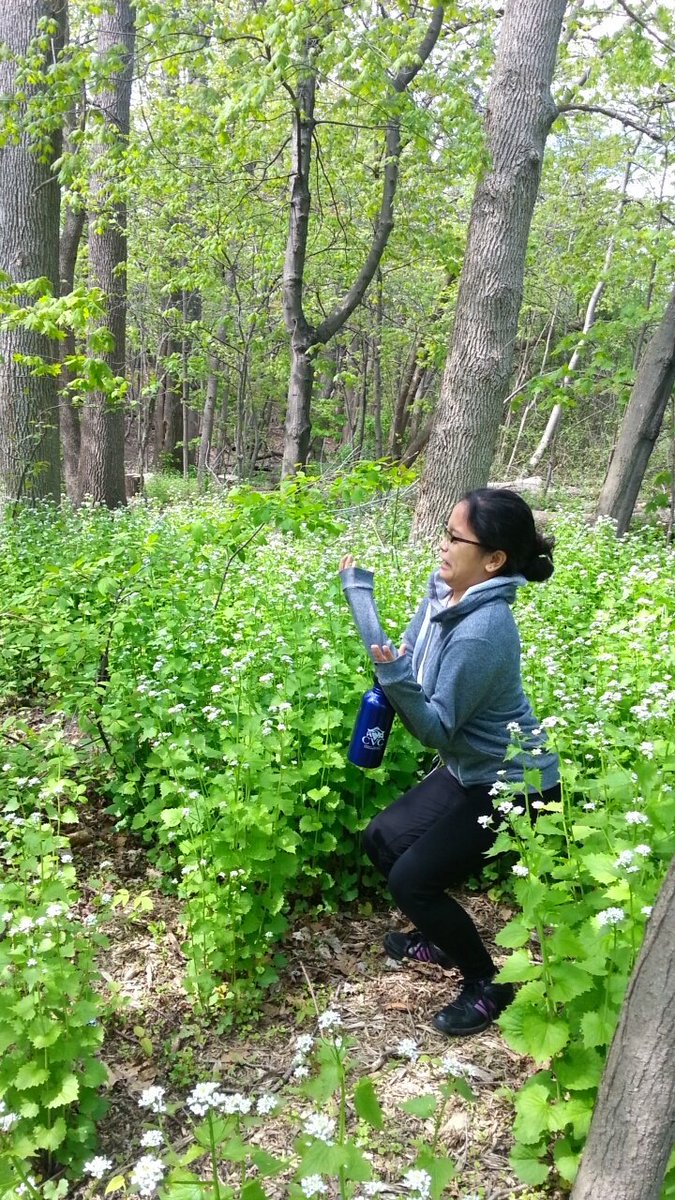
Me surrounded by Garlic Mustard
In Ontario alone there are over 100 invasive species that have been identified. In the EDD MapS (Early Detection & Distribution Mapping System) from the Center for Invasive Species Ecosystem Health [https://www.eddmaps.org/ontario/species/], there are a total of 196 entries of invasive species.
Here’s a quick breakdown for these species:
- Terrestrial plants: 97 entries
- Invasive forest pests: 19 entries
- Aquatic plants: 29 entries
- Aquatic animals: 44 entries
- Invasive pathogens: 4 entries
Now that’s a lot of species for one province, especially for plants, and according to a 2008 report on invasive alien plants in Canada there was an estimated 486 invasive alien plant species nationwide [https://www.agrireseau.net/argeneral/documents/SIPC%20Report%20-%20Summary%20Report%20-%20English%20Printed%20Version.pdf].
What you can do:
It’s hard to comprehend the amount of invasive species that are present. Some of them have been here since the 1800’s when people from Europe were bring their own plants and animals – little did they know the impact that would cause hundreds of years later.It seems almost impossible to be able to get rid of all these species, let alone reduce their populations to mitigate their effect on our ecosystems.
So with all this general knowledge, what can you do?
It’s surprisingly simple:
- If you see one, report it
- Manage any of the ones you find on your property
- And know and follow the rules for invasive species for your area
Ontario has a specific section on their website regarding invasive species that gives you the resources to report sightings, and gives information on both provincial and federal rules on certain invasive species: https://www.ontario.ca/page/stop-spread-invasive-species.
Recently, in Vancouver, B.C., a couple found what looked to be a Japanese giant hornet (a species that preys on honey bees) and reported it to invasive species officials. The main thing that officials wanted to get out there was: if it looks like it doesn’t belong, report it [https://www.cbc.ca/news/canada/british-columbia/how-to-report-invasive-species-british-columbia-metro-vancouver-1.5124914 | https://www.cbc.ca/news/canada/edmonton/invasive-weeds-edmonton-1.5137322].
There are even more simpler ways to stop the spread of invasive species in the garder, on the water, on a trail or trip, and at home:
- Clean your gear and pets
- Buying local and non-invasive species
- And disposing of invaders properly
This is a pretty interesting and important topic to me cause once you see them, you can’t unsee them. I am in no ways an expert on this topic. This post is a general overview of the information I remember as well as some quick research from pretty credible sources.
From more food for thought, check out these:
- The threat of invasive species – Jennifer Klos (TED-Ed): https://www.youtube.com/watch?v=spTWwqVP_2s
- Spread of invasive species in Canada costs billions (2018): https://www.cbc.ca/news/technology/invasive-species-canada-1.4958263
- Invasive species encyclopedia (Canadian Wildlife Foundation): http://cwf-fcf.org/en/resources/encyclopedias/invasive-species/
- Ontario invests $850,000 in invasive species centre (2019): https://news.ontario.ca/mnr/en/2019/05/ontario-invests-850000-in-invasive-species-centre.html
- (Not really about invasive species but still really interesting) Startling UN biodiversity report is a reminder of the risks Canada faces (2019): https://www.cbc.ca/news/technology/canada-biodiversity-1.5125108
Sources of images (in order)
- http://www.invadingspecies.com/common-buckthorn/
- http://www.invadingspecies.com/garlic-mustard/
- https://forestinvasives.ca/Meet-the-Species/Insects/Emerald-Ash-Borer
- https://cvc.ca/your-land-water/tree-planting-and-habitat-restoration-services/invasive-species/invasive-species-spotlights/invasive-plants-spotlight/norway-maple-acer-platanoides/
